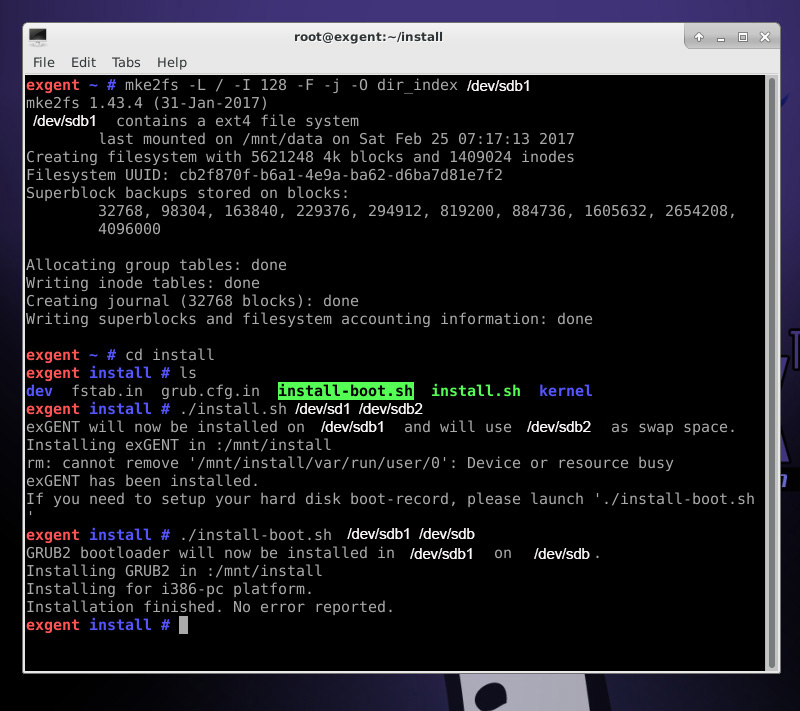

- #INSTALLING GRUB ON USB DRIVE HOW TO#
- #INSTALLING GRUB ON USB DRIVE INSTALL#
- #INSTALLING GRUB ON USB DRIVE ISO#
#INSTALLING GRUB ON USB DRIVE INSTALL#
When it asks where the packages are, enter /slackware for 32 bit or /slackware64 for 64 bit. Installer Crash (Grub2 Issue) Hello everyone Recently I have endeavoured to install GalliumOS 3.1 (Braswell) on my Acer Chromebook 14 (CB3-431, EDGAR) after flashing the full ROM of MrChromebox, however I have been running into the same issue over and over again after multiple installation attempts using two different bootable USB drives. Then, when you get to the SOURCE option in setup use the drive you are installing slackware from (usually it is /dev/sdb1). 3) Insert the second USB drive, and mount it. This will install all of the necessary grub files to the system you are running, but it will not overwrite the MBR of the active drive (it will continue to boot as usual).
#INSTALLING GRUB ON USB DRIVE ISO#
Download the Slackware iso image of your choice and then install to a USB drive using unetbootin. txz package you downloaded, and select install.

It is possible to install with unetbootin. setup your keyboardĪdd swap space (if used) and select your target drive. When installing, choose "Install from a slackware USB stick". the USB drive should NOT be mounted during dd invocation. dd expects the name of a device, not a partition, so you should use eg. The following command will overwrite all the files currently present on the USB drive with a bootable isoĭd if=/path/to/iso of=/path/to/usb (example of=/dev/sdX) You have the right drive designation in the following command To identify the designation of your usb stick/drive useĭd will write the iso to whatever drive you tell it to so make double sure This can be done using the dd command as the root user. Pat's DVD script, AlienBOB's mirror-slackware-current script or even a custom one of your own.Īll that is left to do now is copy the ISO to the USB flash drive. If you choose to use a local copy of the tree you should be able to create your own ISO image using a script such as: For UEFI, you need to specify a drive of the FAT32 partition at the efi-directory parameter. Install Grub2 for UEFI 32-bit (i386-efi): grub-install.exe -boot-directory G: -efi-directory G: -removable -targeti386-efi.
#INSTALLING GRUB ON USB DRIVE HOW TO#
That may be the tree of a stable release, or even the tree of the Slackware current development cycle. grub-install.exe -boot-directory G: -efi-directory G: -removable -targetx8664-efi. In this week's episode of Fun With Linux, we go over how to take your existing Grub bootloader installation, and install it to a removable flash. Ensure in the 'Installation Summary' screen that you choose to install GRUB to the USB key stick, and not the computers hard disk (click the Advanced button to do so). Step 3: Locate the Flash button, and click on it with the mouse. Then, use it to click on the USB flash drive you’ll use to install the Arch Linux ISO. After inserting it, click on the Select target button and open up the device selection area. A USB flash drive that can fit the ISO image (4GB or larger)Ī) official Slackware installation media, preferably the DVD ISO available on any Slackware mirror On the other hand, if youre not concerned with your USB drive wearing out (lifetime warranty, wear leveling, etc), continue in this section. Step 2: Insert your USB flash drive into the computer’s USB port.


 0 kommentar(er)
0 kommentar(er)
